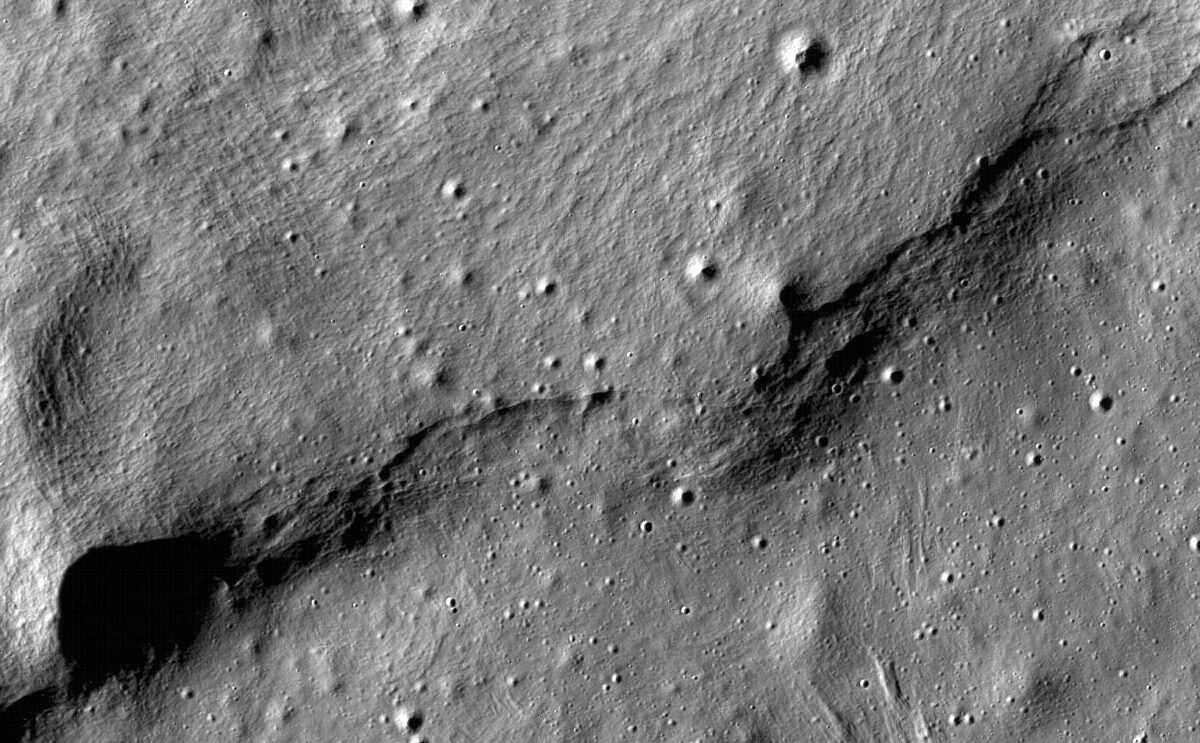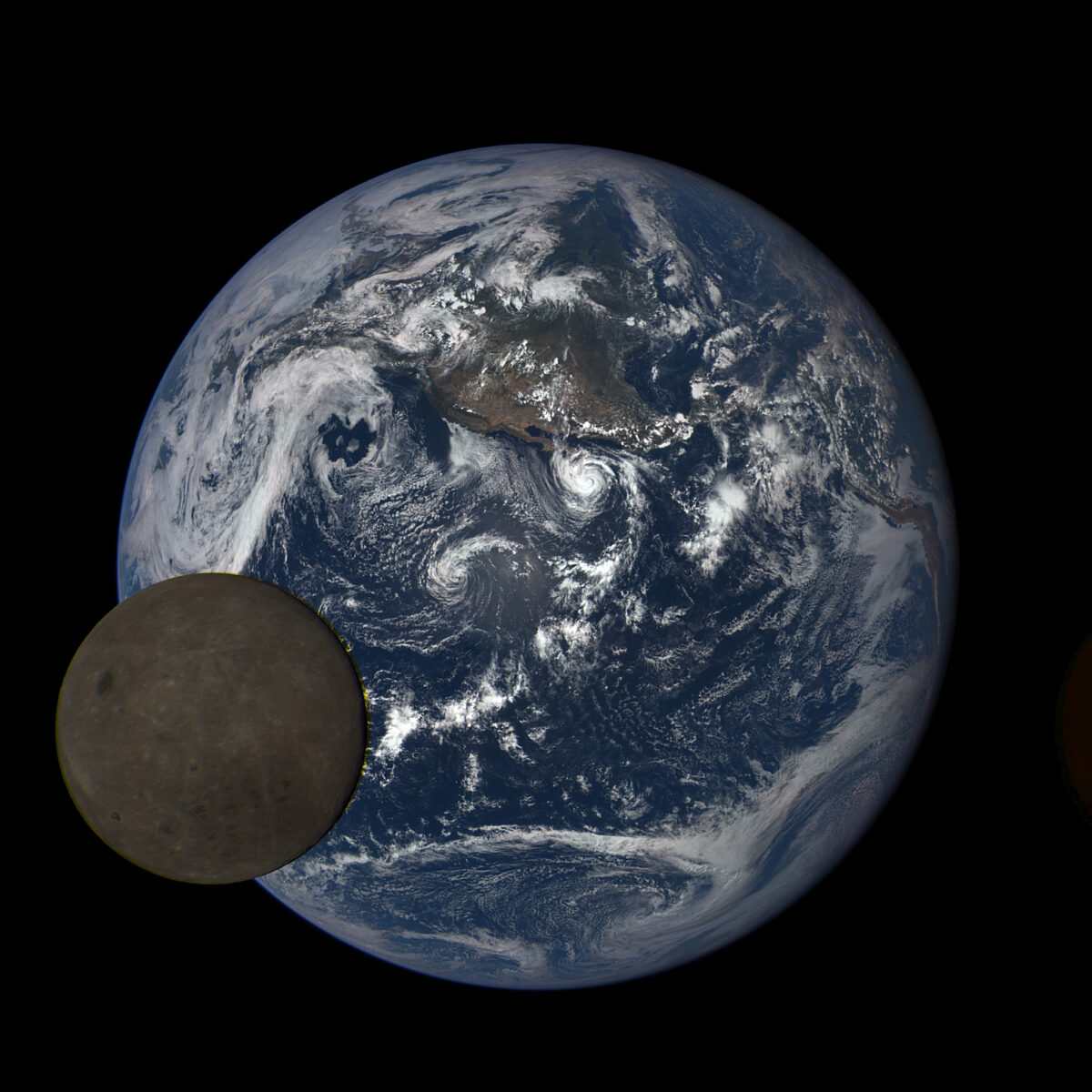Kate Howells • Mar 25, 2024
Is the Moon shrinking?
The Moon as we see it is always changing. Throughout the month, our planet’s natural satellite goes through phases as its orientation relative to Earth and the Sun changes. The phases are predictable and cyclical, giving the Moon a constancy in spite of its variability. But the Moon is also changing in other, more permanent ways.
The Moon is shrinking. Both its actual volume and its apparent size from Earth’s perspective are getting smaller. Although both of these phenomena are happening extremely slowly, they are actually measurable.
The Moon is getting smaller
The change in the Moon’s actual size is caused by the cooling of its interior. The Moon was formed from a great collision between early Earth and another protoplanet about 4.5 billion years ago. This collision created an enormous amount of heat, and the Moon has been cooling off ever since. Although its exterior today is cold and solid, the Moon’s interior is still cooling down, causing it to contract. This contraction affects the entire Moon, causing its surface area to decrease and its solid crust to wrinkle.

We know this is happening in large part because of imagery and data from spacecraft like NASA’s Lunar Reconnaissance Orbiter. This mission, which has been in orbit around the Moon since 2009, and past missions have captured images showing a particular kind of cliff on the lunar surface. Known as fault scarps, these cliffs are caused by two parts of the Moon’s crust being pushed together and forced upward. Fault scarps are found across the lunar surface, giving strong evidence of ongoing contraction deep inside its interior.
How much is the Moon shrinking?
Estimates suggest the Moon has become about 50 meters (150 feet) smaller in diameter over the last several hundred million years. And the Moon doesn’t appear to have stopped shrinking yet.
The Moon’s active shrinking is thought to cause seismic activity known as “moonquakes.” We have had evidence of moonquakes ever since the Apollo program, when astronauts placed seismometers on the lunar surface. These instruments recorded 28 moonquakes between 1969 and 1977 ranging from about 2 to around 5 on the Richter scale.

Other evidence comes from Lunar Reconnaissance Orbiter images that show boulders at the bottom fault scarfs. Weathering from solar radiation gradually darkens material on the lunar surface, and because these boulders are surrounded by brighter material it suggests that these regions were recently exposed to space, as expected if a recent moonquake had sent material sliding down the cliff.
Does the Moon’s shrinkage affect Earth?
The shrinking Moon doesn’t cause any effects on Earth. Although it’s contracting, the Moon’s mass isn’t changing. This means that lunar effects on Earth’s rotation and tides won’t change due to its size reduction.
The Moon is getting farther away from Earth
As well as shrinking in volume and surface area, the Moon is also shrinking in apparent size from Earth’s perspective as it gradually moves farther away from our planet. The Moon moves about 4 centimeters (1.5 inches) farther away from us every year.
This slow but steady distancing is primarily caused by the two-way gravitational interaction between Earth and the Moon.
Most people are familiar with the Moon’s gravitational effects on Earth, which cause tides. But you may not know that these tides in turn pull back on the Moon. Tides are essentially bulges on Earth, both in water and on land. There are always two bulges on Earth: one on the side facing the Moon and one on the opposite side. These bulges move around the planet along with the Moon. But because Earth is also rotating at a faster rate than the Moon’s orbit around it, the bulge closer to the Moon is always pulling slightly ahead of the Moon, tugging it along in the process. This slight pull from the passing bulge causes a very gradual increase in the Moon’s orbital speed. As the Moon speeds up it moves to a higher orbit, farther away from the Earth, which in turn slows it down.

The first evidence we got of the Moon’s changing distance also came from the Apollo missions. Astronauts placed retroreflectors on the Moon's surface so that scientists could bounce laser beams off the Moon and back to Earth, accurately measuring its distance and changes in that distance over time.
Does the Moon’s changing distance affect Earth?
You won’t notice any changes in your lifetime, but the Moon’s gradual movement away from Earth will have effects over longer periods of time.
Total solar eclipses, which rely on the astonishingly perfect coincidence of the Sun and Moon’s apparent size from Earth being the same, will not last forever. In about 620 million years, total solar eclipses will become less frequent, only occurring when the Moon is at its closest point to Earth in its elliptical orbit. The very last total solar eclipse will happen about 1.2 billion years from now.
The Moon’s changing distance also has an intangible but steady effect on the length of a day on Earth. As the Earth tugs on the Moon to speed it up, our planet loses some of its rotational energy. This causes the Earth's rotation to slow down very slightly. As a result, an Earth day gets a little bit longer all the time. This change is tiny, only adding a millisecond to Earth’s day every 50 years.
Support our core enterprises
Your support powers our mission to explore worlds, find life, and defend Earth. You make all the difference when you make a gift. Give today!
Donate

 Explore Worlds
Explore Worlds Find Life
Find Life Defend Earth
Defend Earth

